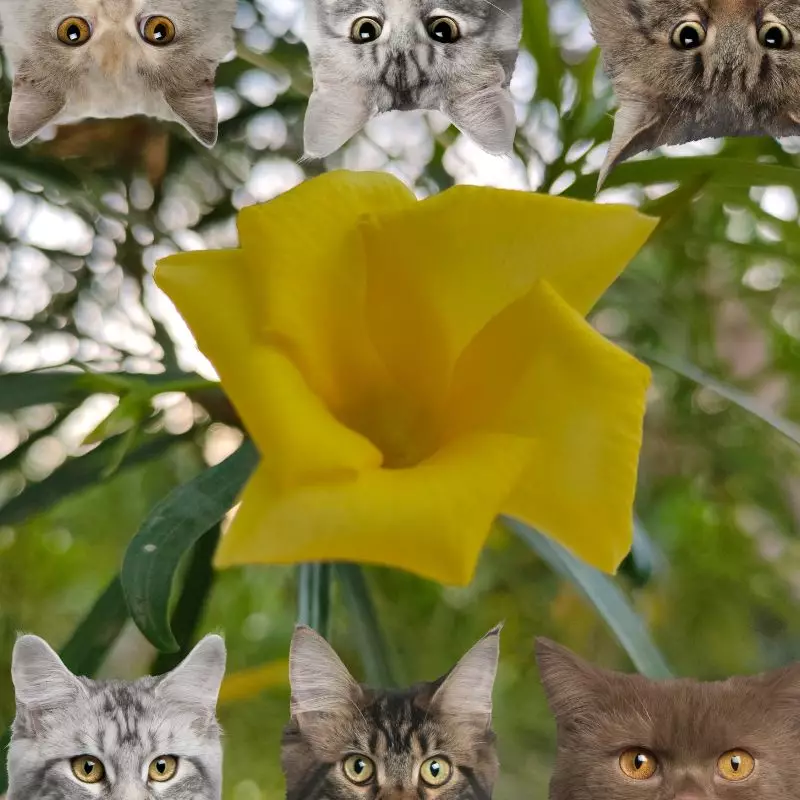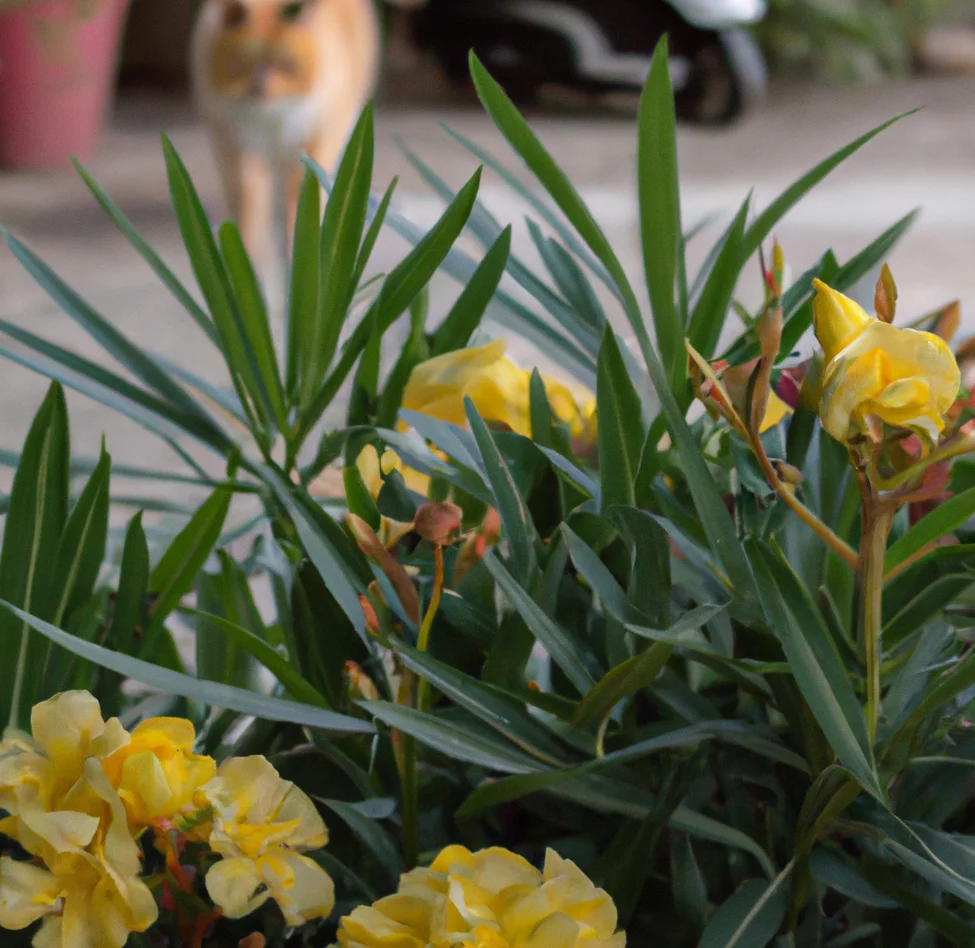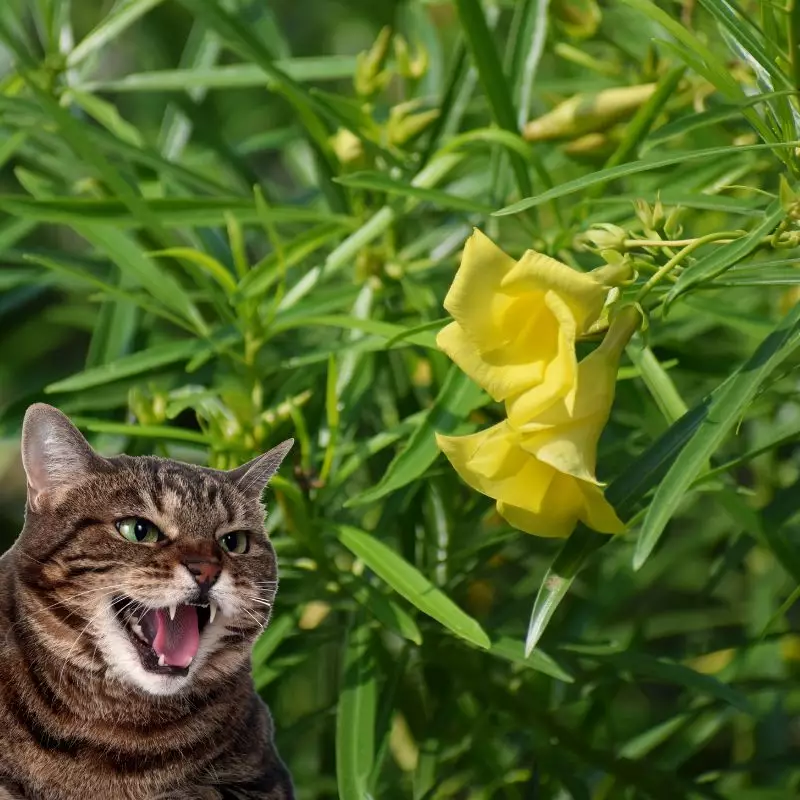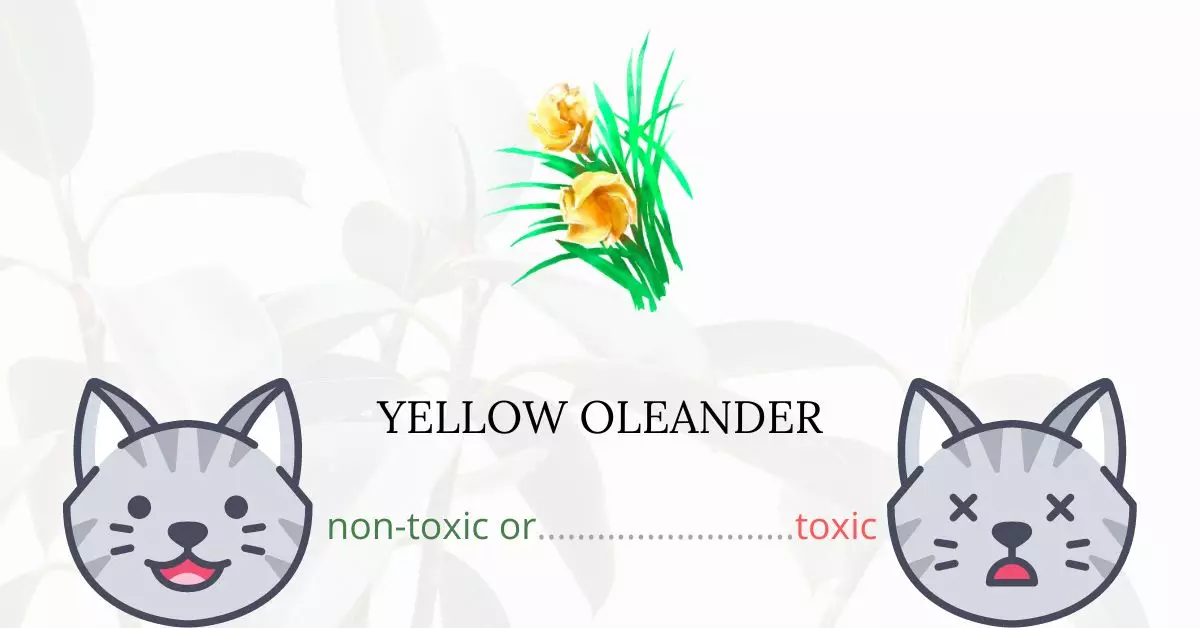Yellow Oleander is, unequivocally, extremely toxic to cats. It possesses compounds such as cardiac glycosides, cardenolides, thevetins A and B, thevetoxin, ruvoside, nerifolin, and peruvoside, all of which are highly poisonous, causing severe harm or even death to most animals, including cats, upon ingestion. The entire plant maintains its harmful characteristics, even in small amounts or when wilted, making even minimal contact perilous.
This article has been composed in collaboration with a panel of experienced Doctors of Veterinary Medicine (DVMs) who have contributed their extensive knowledge and expertise on the subject, ensuring the provision of precise and current information on the dangers posed by Yellow Oleander and its impact on cats. We have also meticulously researched high-authority websites such as ASPCA and PetMD for every plant discussed, emphasizing the toxicity and potential risks associated with Yellow Oleander in this instance.
Yellow Oleander is commonly found in areas with warmer climates, devoid of winter, and can be encountered in gardens or growing wildly. Cats residing in warmer regions, particularly those who spend a significant amount of time outdoors, are at a heightened risk of coming into contact with this toxic plant. Consuming even a few leaves, gnawing on a twig, or drinking water contaminated with Yellow Oleander can have fatal consequences.
Clinical Signs of Yellow Oleander Poisoning in Cats

The repercussions of Yellow Oleander ingestion in cats are profound and can manifest rapidly, often within the first three hours after consumption. Here, we delve into each clinical sign, explaining their occurrence, and what could be causing them if a cat has contacted, smelled, or eaten the Yellow Oleander plant.
- Nausea and Vomiting: These are early signs of poisoning, triggered by the irritant effect of the toxic compounds on the stomach lining, causing discomfort and expulsion of the stomach contents.
- Diarrhea (may be bloody): The toxins irritate the intestinal lining leading to increased motility and can result in the loss of blood through the damaged lining.
- Excessive Drooling: This may indicate oral irritation and is the body’s response to try and remove the irritants.
- Food Aversion: The overall discomfort and nausea can lead to a loss of interest in food.
- Depression: The toxins can affect the central nervous system, leading to altered mental states.
- Hypothermia: Reduced body temperature may occur as the body’s metabolic processes are disrupted by the toxins.
- Slow Heart Rate and Arrhythmias: The toxins in Yellow Oleander can directly impact the heart muscles, leading to irregularities and slowing of the heart rate.
- Slow Capillary Response Time: This is indicative of poor blood circulation, stemming from reduced heart function.
- Tremors: Resulting from the disruption of neural functions due to the toxins affecting the nervous system.
- Dilated Pupils: This can signify neurological involvement and may be indicative of severe poisoning.
- AV Block (a heart block): The toxic compounds can obstruct the electrical signals within the heart, leading to a delay or a block in the transmission.
- Paralysis: Extreme cases may witness a total loss of muscle function due to severe neurological damage.
- Coma: This is the most severe clinical sign, indicating significant damage to the central nervous system and is life-threatening.
It is crucial to recognize these symptoms early and seek immediate veterinary care, as swift intervention can significantly impact the prognosis and the cat’s chance of survival.
First Aid and Treatment of Yellow Oleander Poisoning in Cats

The cat’s symptoms will determine the course of treatment. Every effort will be made to keep the animal’s essential functions stable.
To eliminate any residual plant material before it has been digested, the vet will empty the stomach using either emesis with hydrogen peroxide or gastric lavage (stomach pumping).
Taking activated charcoal can help limit the absorption of additional plant toxins in the digestive tract. The vet will decide whether to utilize a single dosage or many doses.
Heart arrhythmias can be treated with a number of drugs such as potassium chloride, Procainamide, dipotassium EDTA, atropine, FDP, or lidocaine. Digoxin-specific antibody fragments have been found as having the potential to neutralize yellow oleander poisons; however, this medication is difficult to obtain.
If the cat becomes dehydrated, the vet will administer IV fluids.
Recovery from Yellow Oleander Poisoning in Cats

The prognosis is questionable if the cat swallowed very little amounts of the herb, although recovery is possible. The cat might have lifelong cardiac damage as a result of the incident. Death is more likely if a bigger amount of yellow oleander is ingested. The cat will be immobilized, go into a coma, and die within 24 hours.
Prevention of Yellow Oleander Poisoning in Cats
To prevent future poisoning to happen, it is best to keep your cats indoors. This will reduce the risk of getting in contact with yellow oleanders and other toxic plants outdoors.
If you love plants but have cats at home, check out these lists:





